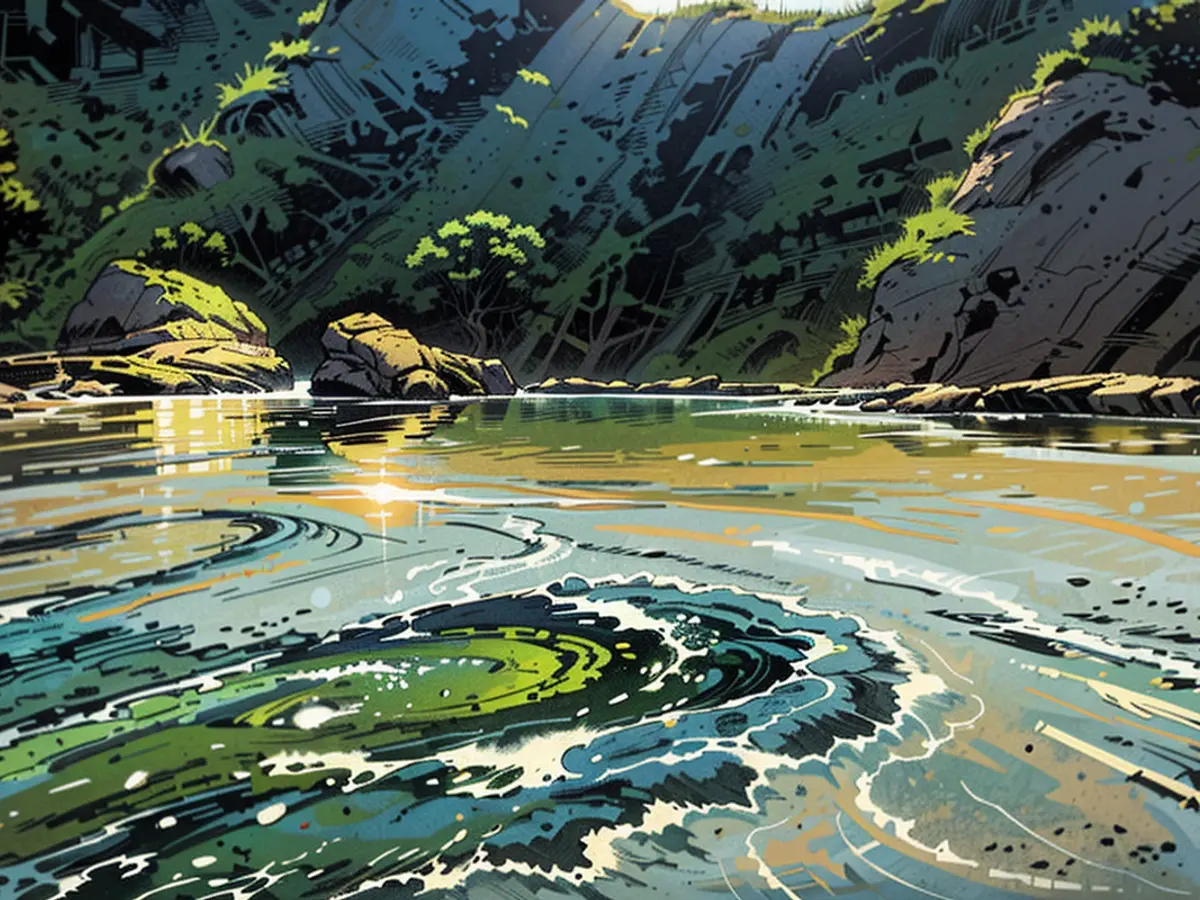summer vacation - Adria with algueslime
The Adriatic, the piece of Mediterranean Sea between Italy and the former Yugoslavia as well as Albania, now belongs to the peaceful seas overall. No comparison, for instance, with the Atlantic or the Pacific, which can be quite powerful. However, at certain spots of the Adriatic, some overcoming is required to go into the water. It's not about the waves but rather about: Algae slime.
At various beaches in Italy, but also in Croatia or Slovenia, this year a slippery-slimy foam floats on the surface, sometimes thicker, sometimes thinner, speckled with small bubbles. Sometimes it's just smaller patches with plenty of space in between, sometimes a dense carpet. The color ranges from White through Yellow to Brownish. Those who mean it kindly call it coffee-brown. The slime, according to a unanimous assessment of science, does not pose a health risk. It's not toxic at all.
After bathing in the sea one or two times under the shower
The outbreak began a few weeks ago in the north, in the Gulf of Triest. Meanwhile, other cities have been affected, such as Ravenna, the tourist magnet Rimini, or Ancona, further south. A survey by Italy's public-law broadcaster Rai near-unanimously concluded: One can indeed go into the water, but one must absolutely take a shower afterwards. "Slippery," says one local. Others complain that it tickles on the skin.
People here have experience with sea slime - or also "sea scum," as some call it. In the late 1980s and early 1990s, it ruined the summer business in Italy for several years. The mucilage, as it's called in Italian, caused problems back then. In 2006/07, the factor was quite high. So far, it has always been over after a few days or weeks. But now, in the peak season, concerns are understandably great. Those who earn their money with tourists don't want to talk about sea slime.
"Dirty Sea" for centuries
But the phenomenon is much older than mass tourism. One of the first to notice it was the Cistercian monk Paolo Boccone. The passionate botanist noted the remains of interwoven and intertwined fibers, covered with slime, on the beaches before Venice in the Adriatic as early as 1697. In scientific literature, there's been a term for it for over a century: "mare sporco" ("dirty sea"). In old photos from the early days of tourism, men in bathing suits and women with hats and parasols can be seen covering their noses at the beach due to the stench.
In all this time, no one has found a convincing explanation as to why there's sometimes this much slime in the Adriatic - and why it's then spared for longer periods. It's speculated that especially hot summers with consequently high water temperatures in the relatively small sea might promote growth - climate change, perhaps? The marine biologist Roberto Danovaro from the University of Ancona told the daily newspaper "La Repubblica": "The Adriatic has become a tropical sea. We're now at the level of the Maldives, only without the tropical color."
Tropical temperatures allow algae to bloom
A few days ago, the water temperature was indeed measured to be around 30 degrees Celsius - almost bathtub warm. Many algae species are thriving particularly well under these conditions. It is also suspected that the unusually large amount of rainfall this spring has filled the sea with an unusual amount of water, contributing to the algal bloom. However, Italy's longest river, the Po, is releasing enormous amounts of fertilizers, pesticides, and sewage from agriculture into the Adriatic Sea.
Besides tourism, another industry is suffering greatly: fishing. Some smaller boats cannot even go out to sea because of the slime: their propellers cannot handle it. If they do manage to go out, mechanical parts often have to be laboriously cleaned from the slime. Furthermore, there is constant damage to the nets. The industry association Fedagripesca therefore called for help from the state and the appointment of an expert commission this week.
Positive Outlook
Despite all the complaints, marine biologist Danovaro remains optimistic: "All in all, the Adriatic Sea is less polluted today than it was 40 years ago," he says. Researchers have also discovered that the algal bloom is melting in many places and dissolving into white flocks - a sign that bacteria in the sea are breaking it down. Perhaps even before the large number of tourists arrive.
- Despite the slime issue, Rimini, known as a popular summer vacation spot in Italy, continues to attract tourists.
- The Adriatic Sea, stretching from Trieste to Albania, often experiences an algal bloom during warmer summers, similar to the Mediterranean Sea.
- In certain parts of the Pacific Ocean, the water can be so clear that you can see sea turtles and coral reefs, a stark contrast to the Adriatic during a bloom.
- Slovenia, with its coastline along the Adriatic, has also reported the presence of the slimy foam this year.
- Croatia, a Mediterranean country with coastlines on both the Adriatic and the Atlantic, has experienced a similar issue with sea slime this summer.
- Rai - Radiotelevisione Italiana, the Italian public-law broadcaster, conducted a survey concluding that the slime is not toxic, but recommended showering after swimming.
- Environmental scientists believe that climate change and increased water temperatures in the Adriatic Sea may be contributing factors to the algal blooms.
- The fishing industry in Ancona, Italy, has been negatively impacted by the sea slime, as fishing nets and boats' propellers are often damaged by the slimy algae.
- Despite the current challenges, the Environment Ministry in Italy is working with marine biologists to develop sustainable solutions to address the sea slime issue, ensuring a healthy and thriving Adriatic Sea for future generations.






